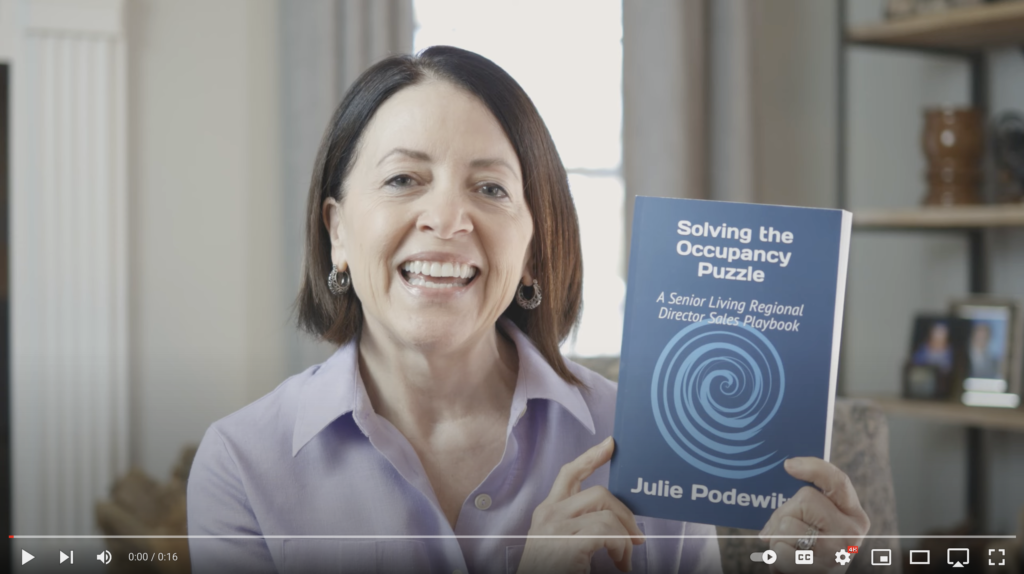The 5½ Senior Living Sales Metrics to Master
Sales people are like Olympic athletes – they train, practice, and are coached to perform at high levels. And like athletes, their performance is measured. Just think about a sprinter that trains to run the 100-meter dash, only they never paid any attention to their time. They have no way of knowing if they are improving, or if they are in the running to compete against other sprinters. That would be silly, wouldn’t it? The same is true for sales professionals – it would be silly to not measure sales performance. We call measuring performance metrics.
In senior living sales, there are 5 metrics every sales professional needs to know and measure regularly. We’ve also thrown in an extra half metric for good measure!
Metric #1: Overall Lead-to-Connect Ratio
Of all your new leads, how many have you contacted?
A connection happens when a) you pick up the phone, b) the prospect answers, and c) you have an initial conversation – a connection. Keeping track of call outs and connections is easy. If your CRM doesn’t track this for you, a low-tech way of tracking it is keeping a sticky note by the phone. Make a checkmark every time the phone is picked up. If the call is answered, circle the checkmark.
Metric #2: Prospect-to-Tour Ratio
Of all your new prospects – meaning new leads you’ve spoken with – what percentage of those come in for a tour?
Since 70%+ of senior living leads are coming from the Internet, the challenge of first connecting with a new lead is greater than ever before. We need to connect with a lead first, do discovery and then schedule a tour or home visit. Strong discovery and emotional connection at this stage will increase the conversion to tour ratio.
Metric #3: Tour-to-Sale Ratio
A.K.A. Tour-to-Deposit. Of tours held, in any given time, what percentage close to the sale?
A sale is simply collecting the check, taking a deposit. If your Tour-to-Sale ratio is 10%, the question to ask is, what decision did the other 90% make? Did they choose another community? Did they choose to stay in their home? How can you build more value with your prospects to increase this ratio? Knowing this conversion helps determine how many tours are needed to get to the number of sales needed.
Metric #4: Deposit-to-Move-In Ratio
Of all your deposits, what percentage move in?
Why is this metric important? There are reasons within our control and beyond our control why a prospect who made a deposit doesn’t move in. The reasons beyond our control are death and acuity higher than your community can provide care for. The reasons over and above that – the ones within our control – are the ones that may be an issue that warrants a closer look by sales management.
Metric #5: Outreach Appointment-to-Professional Referral Received Ratio
Of all your professional outreach appointments held, what percentage resulted in a referral received?
Simply put, it’s the number of referrals received from a professional in a given time period compared to the number of outreach appointments completed. For example, a Sales Director completes 20 face-to-face outreach appointments this month, and during this same month the community received 4 professional referrals. The appointment-to-referral ratio is 20%. For every 5 appointments completed, a referral was received. A second example: 10 appointments, 1 referral received. 10 to 1, 10% appointment-to-referral ratio.
We place high importance on this metric because referrals from professionals in your community convert to prospects at a significantly higher rate than referrals from paid referral sources – often 5 times more often.
And the ½ Metric: The In-Out Grid
Occupancy growth requires that a community have more move-ins than move-outs over a time frame like a month, quarter, or year. We call it netting up when there are more move-ins than move-outs, and netting down when opposite. There’s an easy way for sales professionals to keep track of their move-ins and move-outs to arrive at their net occupancy change: the In-Out Grid. It looks like this:
| Move-Ins | Move-Outs |
| 1/5 Henry | 1/1 Johnson |
| 1/10 Smith | 1/22 Rivers |
| 1/14 Jones | |
| 1/31 James | |
| Total Ins: 4 | Total Outs: 2 |
In this example, in January there were four move-ins and 2 move-outs. The result of the 4 ins and 2 outs is net of +2, or they netted up 2.
Measuring sales performance with metrics and paying close attention to them on a regular basis is vital to knowing where the weaknesses and gaps are in your systems and processes. By keeping on top of a handful of key metrics like the ones above, it makes the task of improving sales skills much easier for the sales professional and managers.
Need a best-in-class sales playbook for your senior living company’s sales department? Grow Your Occupancy is here to help! Book your free 30-minute consultation to find out how!




